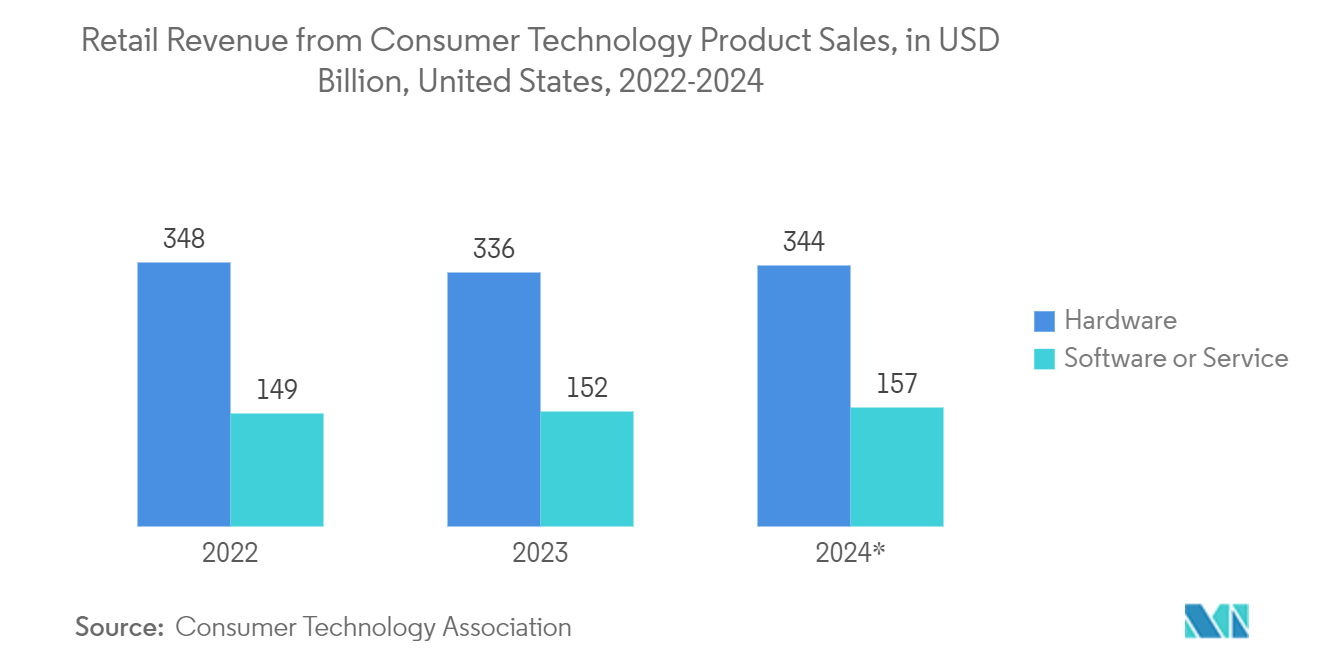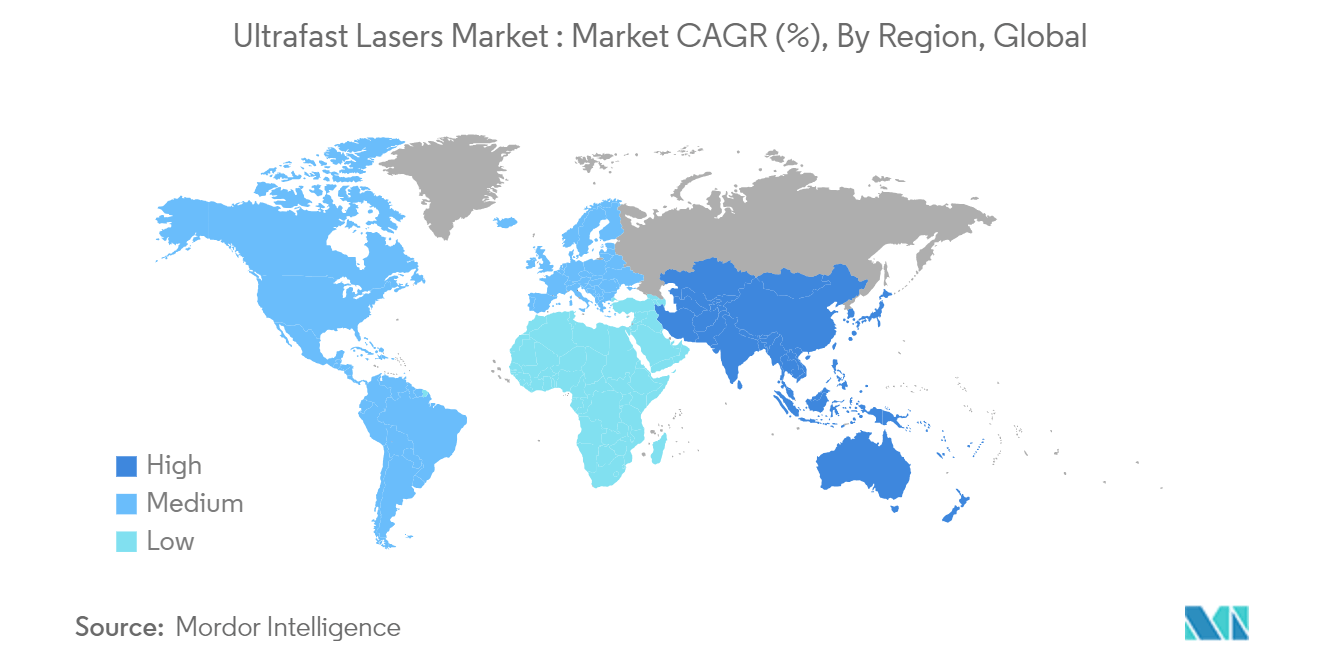Market Trends of Ultrafast Lasers Industry
Consumer Electronics to Witness Significant Growth
- Most consumer electronics applications require a focused laser beam delivered in highly repeatable pulses at a rapid repetition rate for maximum productivity and precision. Fiber lasers' outstanding beam quality, flexibility, and stability are ideal for micromachining applications. Recently, IPG significantly expanded its product portfolio from the traditional infrared into the green and ultraviolet wavelengths and developed picosecond and high femtosecond pulse capabilities, which greatly broaden the scope of consumer electronics applications able to benefit from fiber laser technology.
- In addition, the consumer electronics industry covets IPG fiber lasers and integrated automated systems for their unique combination of reliability, flexibility, efficiency, high power, beam quality, compactness, and cost-effectiveness.
- The studied sector is driven primarily by the increasese in demand from the consumer electronics sector and fast-paced technological developments, which force OEMs to introduce unique products continuously in the market. Consumer electronics providers primarily rely on electronic manufacturers who offer benefits like cost savings, reduced time-to-volume, quality, decreased time-to-market, and flexibility to provide their products in the market.
- According to the Consumer Technology Association, in the United States, consumer technology retail revenue is forecast to increase slightly between 2022 and 2024, reaching over USD 500 billion at the end of the period. Hardware accounts for most of the revenue, bringing in around USD 345 billion in 2024.
- Most of the electronic appliances in the market nowadays are downsized and demand tighter dimensional tolerances so that the elements can fit inside ever-smaller form factors, driving the maturation of the ultrafast laser. The electronic manufacturing process needs to inspect the tinier component features and improve accuracy.
- Ultrafast lasers are crucial in manufacturing specific smartphone components, such as microprocessors and semiconductors. The increasing adoption of smartphones is going to to aid the studied market's growth significantly.

Asia-Pacific is Expected to Hold Major Market Share
- The Asia-Pacific is home to some of the world's largest manufacturing economies, including China, Japan, South Korea, and Taiwan. The ongoing expansion of manufacturing industries in sectors such as automotive, electronics, aerospace, and medical devices creates a significant demand for industrial lasers to support various machining, cutting, welding, and marking applications.
- The Asia-Pacific houses some important players in the market, such as Han's Laser Technology Industry Group, among others. The region is known for its capabilities in the automotive and medical industries, which are expected to drive its market growth. Also, various players have invested in driving their growth and development, as the Asia-Pacific is expected to witness the highest growth rate in the market.
- Moreover, the automotive industry in the region is moving toward electrification and miniaturization while requiring high rigidity, design flexibility, and productivity. Blue lasers with high optical absorption efficiency are in high demand in copper fabrication for automotive motors and batteries. The highly productive processing requires a laser beam source with high output power and beam quality.
- The region is the biggest manufacturer of semiconductor and electronics products owing to the presence of companies like Taiwan Semiconductor Manufacturing Company. Taiwan produces more than 60% of the global semiconductors and over 90% of the advanced ones. Most of the semiconductors are manufactured by TSMC.


